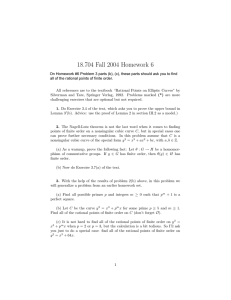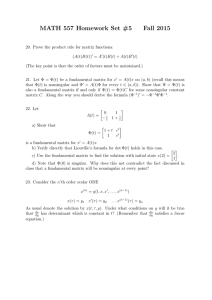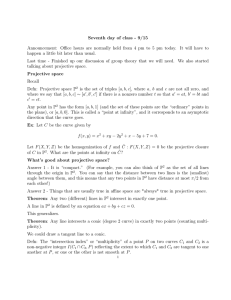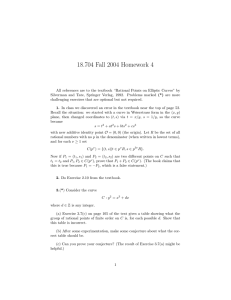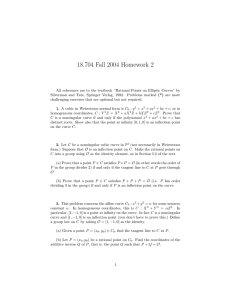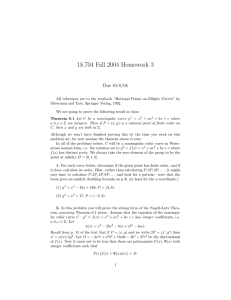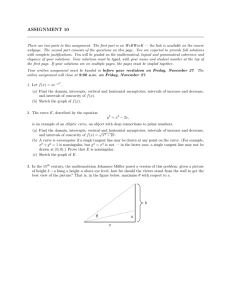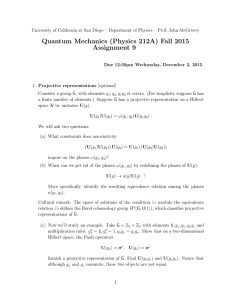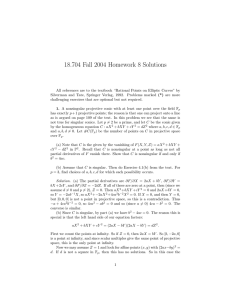18.704 Fall 2004 Homework 8
advertisement
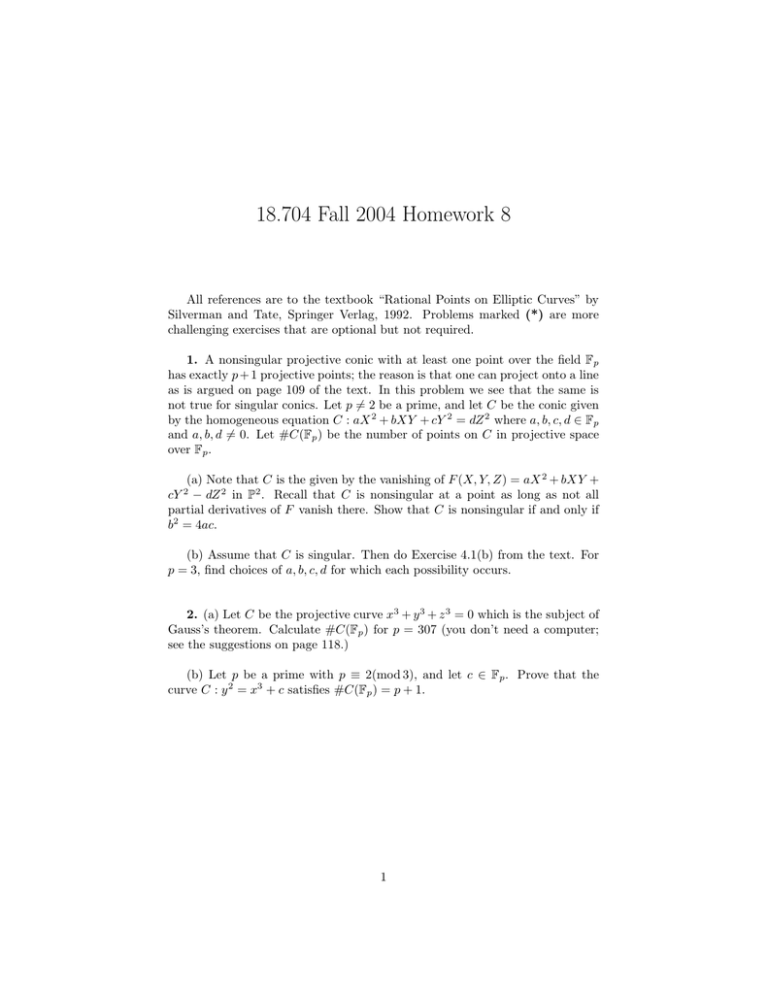
18.704 Fall 2004 Homework 8 All references are to the textbook “Rational Points on Elliptic Curves” by Silverman and Tate, Springer Verlag, 1992. Problems marked (*) are more challenging exercises that are optional but not required. 1. A nonsingular projective conic with at least one point over the field Fp has exactly p + 1 projective points; the reason is that one can project onto a line as is argued on page 109 of the text. In this problem we see that the same is not true for singular conics. Let p = ⊂ 2 be a prime, and let C be the conic given by the homogeneous equation C : aX 2 + bXY + cY 2 = dZ 2 where a, b, c, d ≡ Fp and a, b, d ⊂= 0. Let #C(Fp ) be the number of points on C in projective space over Fp . (a) Note that C is the given by the vanishing of F (X, Y, Z) = aX 2 + bXY + cY − dZ 2 in P2 . Recall that C is nonsingular at a point as long as not all partial derivatives of F vanish there. Show that C is nonsingular if and only if b2 = 4ac. 2 (b) Assume that C is singular. Then do Exercise 4.1(b) from the text. For p = 3, find choices of a, b, c, d for which each possibility occurs. 2. (a) Let C be the projective curve x3 + y 3 + z 3 = 0 which is the subject of Gauss’s theorem. Calculate #C(Fp ) for p = 307 (you don’t need a computer; see the suggestions on page 118.) (b) Let p be a prime with p � 2(mod 3), and let c ≡ Fp . Prove that the curve C : y 2 = x3 + c satisfies #C(Fp ) = p + 1. 1 3. In this exercise we work over Q, and revisit points of finite order again using reduction modulo p as a tool. The equation we are interested in is C : y 2 = x3 + bx for some nonzero b ≡ Z. Let � ⊕ C(Q) be the subgroup consisting of all rational points of finite order on C. (a) In Exercise 4.8, p. 142, it is shown that if p is any prime number such that p � 3 (mod 4), and b is not equal to 0 in F�p , then the curve C : y 2 = x3 + bx satisfies #C(Fp ) = p + 1. Assume this without proof, and use it to show that the order of the group � is 2 or 4. (b) Recall from section III.4 that the multiplication by 2 map on C is de­ composed as a composition � → � where � : C � C and � : C � C are given by explicit formulas on p. 79. Use these formulas to show that there exists a rational point P ≡ C such that 2P = (0, 0) if and only if b = 4d4 for some integer d. (c) Show that the group structure of � is given precisely by the following table: � ⎧Z/4Z if b = 4d4 for some d ≡ Z � � = Z/2Z � Z/2Z if − b is a square ⎧ � Z/2Z otherwise. 2

